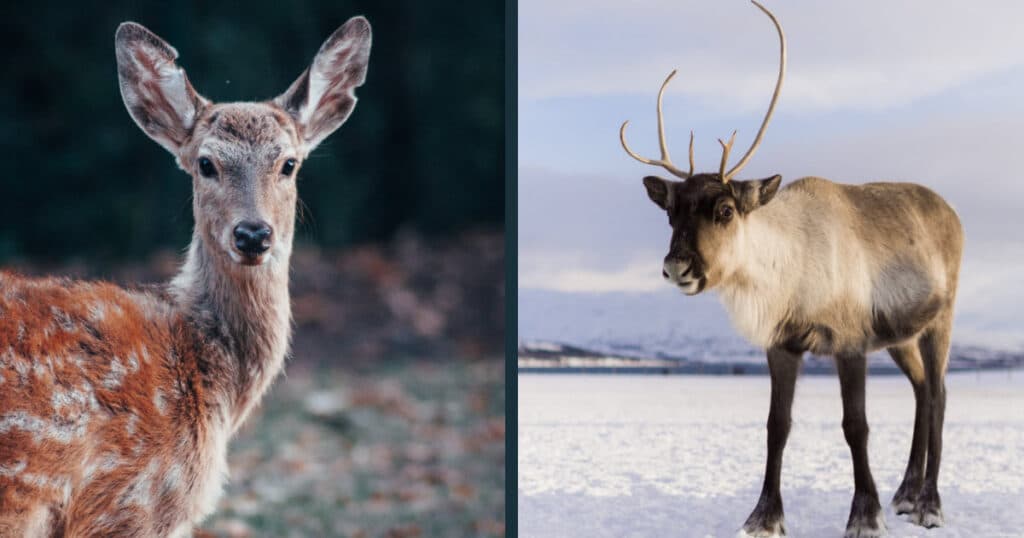Have you ever wondered what is the difference between reindeer and deer? You’ve come to the right place because in this article we’ll walk through the differences and compare deer vs Reindeer to explain what makes reindeer unique from other deer.
However, perhaps the best place to start is with this simple rule: All reindeer are deer, but not all deer are reindeer.
What does this mean?
Well, deer is a family of animals comprising several different species. Reindeer are just one species within that wider family.
Being from the same family means there are many striking similarities between reindeer and other deer species.
That said, there are also some remarkable differences. Let’s take a closer look at the unique characteristics of each to better understand what makes Reindeer special.
Comparing Reindeer to Other Deer
To start, let’s get a broad overview of what makes a deer a deer, and what makes a Reindeer unique from other deer.
Deer
Deer are the only extant members of the Cervidae family, which covers 90 species across two main groups, Cervinae and Capreolinae.
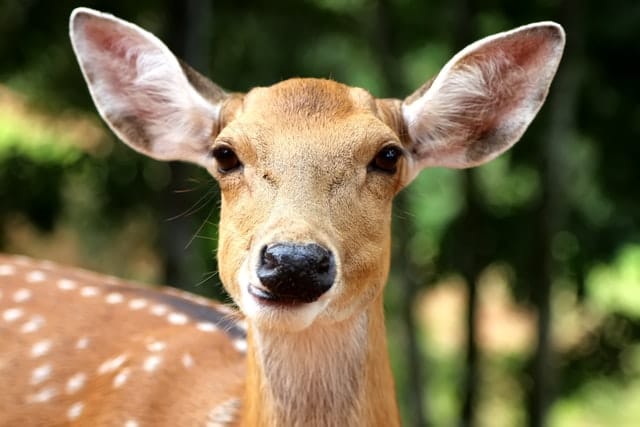
Capreolinae is perhaps the most quintessential example of a deer to the general public. This subspecies includes the white tail deer, the most widely distributed ungulate in the Americas and found from Bolivia to Alaska. If you are trying to picture a white tail in your mind, it is the species Disney chose for the Bambi character.
Capreolinae is also the subspecies that includes reindeer, mule deer, and moose. Cervinae is a family that includes elk, fallow deer, and red deer. Cervinae species tend to look very similar to each other, while there is greater visual variation in the Capreolinae family.
You’ll find different types of deer around the world in the USA, Canada, South America, Asia, and Europe. They have also been successful when introduced in island nations like Australia, New Zealand, and the Caribbean. Adaptable across the family, Cervidae can live in forests, marshlands, meadows, savannas, and tundra.
At nearly every size, deer have relatively thin legs compared to their body, and antlers. Across most species, only the male will grow antlers each year to compete against other bucks in mating rituals. Antlers grow behind velvet, which provides nutrients and protection before shedding off each year before the rut.
Reindeer
Reindeer are also called caribou in North America. They are a deer species that are specialized for living in the cold climates across the Arctic.
Reindeer and Caribou are technically the same species with some differences. Reindeer are predominantly in Europe, and are often domesticated. Caribou are primarily in North America and are not domesticated. There are 10 subspecies in the family.
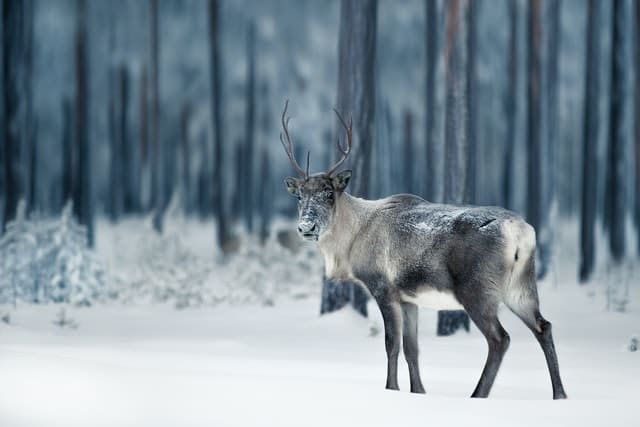
Because they are Capreolinae, reindeer may share more in terms of appearance with white tail deer, moose, and mule deer. While they share body characteristics with Cervinae deer, you won’t confuse reindeer for a red deer or even an elk.
When comparing Moose and Caribou or Reindeer, you’ll note that Reindeer are among the largest deer species, trailing Moose and Elk (Wapiti), with males tipping the scales at up to 400 points and measuring up to 84-inches from nose to tail.
Reindeer are also distinct for having the largest antlers of any deer species relative to their body size.
Deer vs Reindeer: A Closer Look
Despite sharing a lot of similarities with other deer species, there are many factors that make reindeer unique.
Let’s dig deeper in our Deer vs Reindeer comparison:
Habitat and Range
Deer are a very adaptable species and live in many climates, particularly forests.
Many deer species favor all types of forests, including rainforests, deciduous forests, coniferous forests, and temperate forests. You can also find species in the far-reaching climates of meadows and savannas.
However, Reindeer or Caribou are the species best adapted for cold weather. They spend the majority of their time in Arctic conditions.
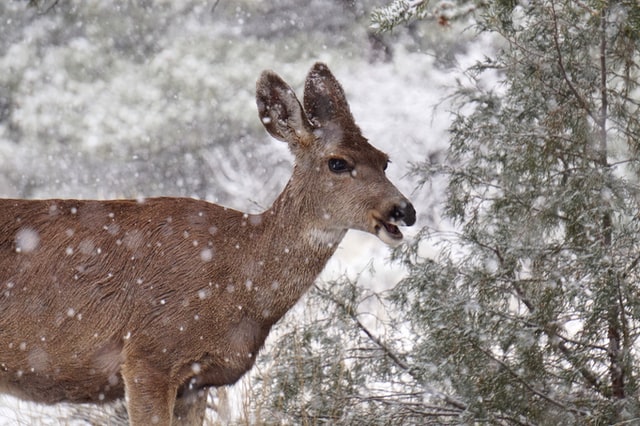
Whitetail deer, elk, and mule deer have a range that extends north, but not nearly so far north as caribou, which can be found deep into the Arctic Circle. Moose are the only related species with a similar range to the reindeer.
Boreal forests and tundra are the reindeer’s preferred habitat.
Size
While reindeer are dwarfed by the 1000-pound moose, it is larger than most other deer species. Reindeer can weigh more than 600 pounds (though 400 pounds is more common). Comparing deer vs reindeer, that is much larger than smaller deer species, such as red deer and fallow deer.
Fur
Reindeer fur is significantly thicker than the fur of other deer species. After all, these animals spend all their time in harsh and very cold conditions. Thicker fur lets them withstand that climate.
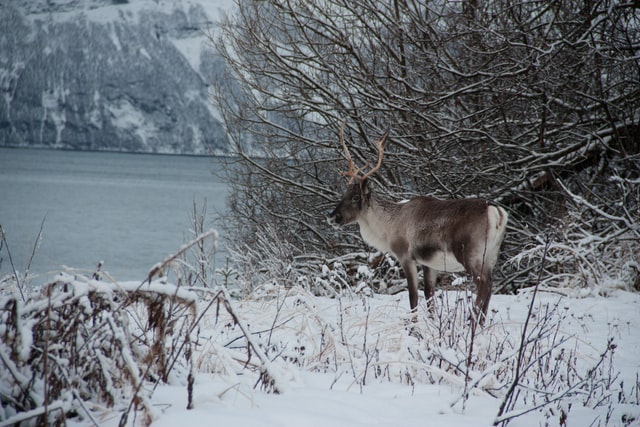
Moose also extend to these areas but have a broader overall range. They can be found further south than reindeer. Reindeer fur is thicker than moose hair because they live in exclusively cold climates.
Across the deer family, all species have less dense fur compared to reindeer. Reindeer also have hair covering their hooves.
Nose
Speaking of hair, reindeer are the only deer species to have a hairy nose, though many deer have whiskers.
Again, this has a lot to do with the cold regions where the animal lives. Further adaptability in the deer’s nose makes living in cold climates possible.
Reindeer are the only Cervidae member to have specialist turbinate bones in the nasal cavity, designed to warm cold air as the animal breathes. This is why Reindeer noses show up as red on thermal cameras.
Antlers
Antlers are the deer’s characterizing trait. Much of the deer population does not have antlers because female deer, or does, do not grow antlers.
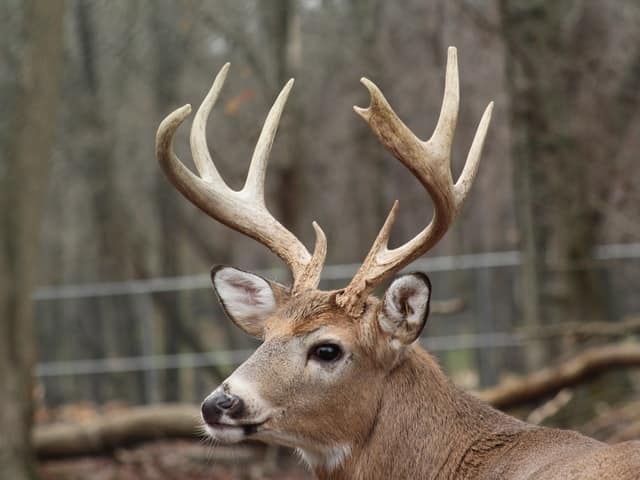
Instead, antlers are grown by males to engage in combat or displays of dominance during mating season (the rut). However, reindeer are unique amongst the deer family because they are the only species where both the male and the female grow antlers.
While the antlers of a moose are bigger in real terms, reindeer have the largest antlers of any deer species when compared to their body size.
Association with Humans
Reindeer are also unique in that they are the only truly domesticated member of the deer family. Sure, humans use other species on deer farms, but only the reindeer has undergone domestication. For thousands of years, reindeer served as beasts of burden or were sources of food and resources.
Reindeer are so closely linked to humans we have integrated them into our folklore during the yuletide season. Santa’s sleigh is pulled through the air by magical reindeer after all.
Other deer species cannot be domesticated, and they are often the target of deer hunters as first-class game animals.

